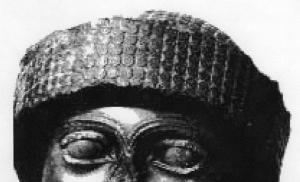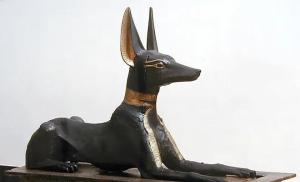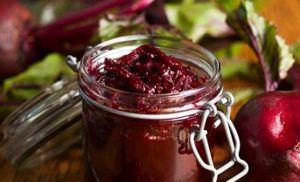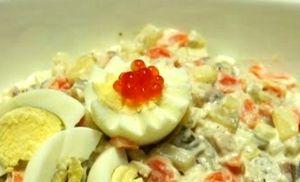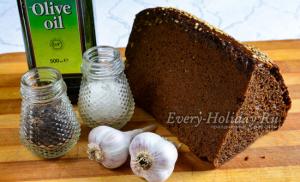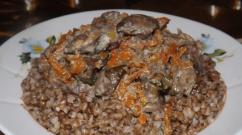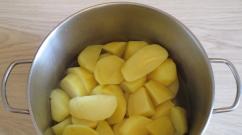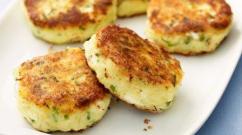Muscle pain after exercise. Muscle pain after exercise: good or bad
Some people enjoy these sensations (which means they were working at their full potential), while others are deprived of the joy of training. People who take significant breaks in training and beginners are the most susceptible to muscle pain.
What methods help reduce and relieve muscle pain?
Warm-up and movement
Muscles, no matter how much they hurt, should not be inactive. Their regular operation (contraction/relaxation) allows you to reduce soreness and speed up the recovery process after training. Static muscle stretching is no less effective (not during training, but before and after). Regarding the prevention of muscle pain, the best remedy– This is a 10-minute warm-up before exercise and 10 minutes after exercise. Warming up will help reduce fatigue, reduce pain and avoid microtrauma.
Water treatments
When blood flow is obstructed, lactic acid tends to linger in the muscles, and hot water After training, the condition significantly improves. True, this does not apply to “long-term muscle pain” - if you feel pain even after a day or more, then lactic acid has nothing to do with it. Rapid muscle recovery is facilitated by a combination of cold/warm water (contrast shower after training for 7-10 minutes), a warm bath, and douches. Excellent product to reduce pain – 10 minutes in a bathhouse or sauna (don’t forget about drinking plenty of fluids).
Pool, swimming
This item includes both the healing effect of water and warm-up (before and after exercise). Leisurely swimming in the pool and swimming in the pond will help reduce and prevent muscle pain.
Antioxidants
These substances have the ability to bind free radicals in the body, their immediate job is to neutralize oxidation and breakdown products. The body is not capable of self-sufficiency in antioxidants during intense physical activity; therefore, the entire training process must be accompanied by their correct intake. This function is performed by: retinol and carotenes, vitamin C, vitamin E, selenium, succinic acid and (most effective) flavonoids. The latter should be looked for in fruits/vegetables, berry seeds and peels, blue cabbage, cherries and grapes (fruit colors of flavonoids range from yellow to blue to purple).
Anti-inflammatory drugs
Of course, we are not talking about NSAIDs (they are unacceptable for the treatment of pain in sports), but about alternative means. That is, about natural ones. For example, herbal decoctions (currant leaves, rose hips, licorice, linden and St. John's wort, bearberry, chamomile). Or foods with anti-inflammatory healing properties– baked potatoes in their skins, figs and pomegranates, cherry juice, ginger and lemons, walnuts and apples, currants with raspberries, viburnum, beets, etc.
Many people know about the effectiveness of massage in preventing and treating muscle pain. But not many take advantage of this opportunity. But in vain! Massage doubly speeds up the recovery of muscles and the body itself, and in the hands of a professional massage therapist you can completely forget about pain. If your salary does not allow you to regularly use the services of a massage therapist, you can carry out this procedure yourself and with the help of loved one. Muscle pain is relieved by kneading massage movements using essential oils (clary sage, lavender, marjoram) or ointments (with herbs and bile, with essential oils). There are also creams based on natural ingredients that, when applied at night after training, can very effectively reduce pain.
There is no need to tell anyone about the benefits of healthy, full sleep exclusively at night. During the process of sleep, muscles are restored, fatigue goes away - the more hours you sleep, the more effective it is. useful action. It is clear that more than 8-9 hours of sleep is already too much, but if you do not have enough rest at night, then be sure to give yourself some during the day.
And, of course, remember about preventing pain during training: do not rush into the training regime too suddenly - enter it gradually. Do a warm-up and do not forget about fluid loss (replenish it in a timely manner). Try to fit the entire set of exercises into 30-40 minutes. This way you will reduce the production of cortisol, through an increase in which the body mobilizes energy resources.
Eat enough protein, eat citrus fruits and take care of your proper nutrition generally.
To begin with, it is important to know that soreness is not dangerous; it indicates that the muscles are adapting to the new load. And to get rid of pain, you should start with.
So, what exactly will help get rid of pain?Proper nutrition
After intensive training muscles need protein and carbohydrates: proteins produce amino acids that are necessary for healing, and carbohydrates provide glycogen. You can get protein by eating chicken, fish, soy, turkey, and egg whites—the most concentrated sources of protein.
Drink plenty of fluids
Support . Drinking plenty of fluids is necessary, you should drink at least two liters per day. Dehydration leads to muscle fatigue. In addition, water helps remove toxins from the body.
Recovery training
Performing lungs aerobic exercise. This helps relieve painful muscle stiffness and increases blood flow, which in turn provides oxygen and nutrients to the muscles.
Relaxing massage
An effective way to relieve pain is a relaxing massage. It also promotes better blood circulation in the muscles, relieves stiffness and muscle tension.
Rest from intense training
It is necessary to give the body time to recover. It’s enough just to avoid intense physical activity, and after a few days the pain will go away on its own, without special treatment.
Compress
A cold compress will help relieve pain and discomfort. This compress will be most effective on the first day after exercise. The compress should be applied for 15-20 minutes every 5-6 hours.
Warm compress expands blood vessels and brings relief. A bath, shower, heating pads, and warming cream will be effective. You can warm the muscles for 20-30 minutes 1-3 times a day.
Alternating heat and cold
In this case, the cold will reduce inflammation, and the heat will increase blood circulation. You can alternately apply an ice pack (for 10 minutes) and a heating pad (for 20 minutes). A contrast shower is also effective: alternating 40-60 seconds cold water and 1-2 minutes - warm.
Medications
It is often recommended to take aspirin or ibuprofen in case of muscle pain. However, taking these medications will only temporarily reduce pain and will not speed up healing. And if taken frequently, it can slow down recovery.
It is always easier to prevent discomfort and pain than to treat them. Krepatura usually occurs after such a load to which the muscles are not yet accustomed and are not ready. Therefore main way prevention - a gradual increase in load so that the muscles can adapt to new exercises. Warm-up is also very important. It will not only reduce the risk of injury, but will also increase blood flow to the working muscles.
To learn how to warm up properly, watch the video.
Instructions
In order to relieve muscle pain, you first need to find out the cause of its occurrence. Treatment may vary depending on what is causing the muscle soreness. For example, treating muscle spasms and cramps will be different from treating muscle pain caused due to overexertion.
One of the most effective ways to soothe sore muscles is through relaxation and rest. Any activities that may further strain the muscles should be avoided. If you have leg muscles, do not do intense exercises cardiovascular system within a couple of days. If you still don't want to give up your exercise, opt for walking or cycling.
Take anti-inflammatory and painkillers. These include aspirin and acetaminophen, they will reduce inflammation and pain. Take as needed and do not exceed the recommended dosage. Apply anti-inflammatory cream to damaged areas of the body to relieve soreness and relax muscles. These creams typically start in 30 minutes or less and can significantly reduce inflammation and pain.
Depending on the type of pain, use cold or hot compresses. If you have cramps or muscle spasms, apply a hot compress, such as a heating pad, to help relax sore muscles, or take hot bath. If you have pulled a muscle, a cold compress will relieve the pain. Apply an ice pack to the sore muscle areas for 15 minutes. Repeat the procedure 2-3 times a day. If you experience pain when using either or a cold compress, you should immediately stop further use.
Now you can stretch. Stretching helps relax the muscles and often speeds up the healing process. You should first do some light stretching and then gradually increase the range of motion as you feel relief in your muscles. You can lightly massage the sore areas of the muscles. There is no need to rush; you should massage the muscles slowly, as some areas of the body may be sensitive to touch. If you do not feel any improvement after following these steps, consult your doctor.
Surely you have at least once experienced muscle pain, the cause of which is overload. This problem It is not dangerous to health, but it makes life significantly more difficult. Don't waste your money on pharmaceutical drugs, which are weak. Get rid of muscle pain with proven traditional methods.
You will need
- - Olive or baby oil;
- - ice;
- - potato;
- - thick paper or fabric;
- - woolen scarf;
- - elastic bandages;
- - dried cucumber flowers;
- - baking soda;
- - Apple vinegar;
- - turpentine;
- - burdock leaves.
Instructions
If you have severe muscle pain, you need an emergency treatment, which you can do yourself. Apply a little olive or baby oil to your palm and begin massaging the sore area for five minutes. A cooling massage with an ice cube can help relieve muscle pain.
Prepare a potato compress. To do this, you will need several medium-sized potato tubers (depending on the source of pain). Boil them until full readiness and cool, mash until puree. Apply potato pulp to the sore spot and place thick paper or several layers on top. Insulate the top with a woolen scarf. This compress warms up the muscles well. It is recommended to add a portion of warm potatoes each time.
For muscle injuries, you need to apply a tight bandage; for this, use elastic bandages (bandage not too tightly so that blood flows to the tissues). A teaspoon of cucumber flowers (you can
Physical activity is beneficial for the body - this is a proven fact, not questionable. Regular exercise improves well-being, quality of life, speeds up metabolism, helps maintain flexibility and mobility of the body, promotes the growth of muscle mass and increases endurance.
But all these positive points a little overshadowed by one unpleasant by-effect from sports training: muscle pain of varying intensity. Pain syndrome most often occurs in beginners after the first exercises, but even if you are an experienced athlete, muscle pain probably accompanies you during periods of high-intensity loads or when performing weight-bearing exercises.
Many, having felt pain after sports activities, succumb to a common misconception and consider it a sign of a well-done workout and a manifestation of an increase in muscle mass: “it hurts, it means it’s growing.” In fact, severe muscle pain and the inability to move normally the next day, as a rule, are the result of ordinary non-compliance with the exercise technique. Let's take a closer look at what happens in the muscles during training and why pain occurs.
Causes of muscle pain after exercise
There are two types of muscle pain that appears on initial stage sports activities that are considered natural and therefore safe.
One occurs right during training, at the moment when you perform the last, heaviest repetitions of the exercises. Why is this happening?
During training, ATP (adenosine triphosphoric acid), which is the most important source of energy, begins to decompose in muscle tissue and blood. Because of this, hydrogen ions accumulate in the blood and muscles, and the pH of the blood begins to shift towards oxidation. It is because of the “acidification” of the blood that a burning sensation occurs. It passes quite quickly: blood and increased air ventilation in the lungs help the body cope with the accumulated hydrogen ions. But all subsequent pain is associated with microdamage in muscle tissue.
The second is the so-called sore throat, or delayed muscle pain.
It occurs 6-8 hours after physical activity and reaches a maximum after about 2-3 days. As a rule, its appearance is a consequence of unusual or excessively intense physical activity. You have most likely experienced yourself more than once: not only at the very beginning of fitness classes, but also when mastering new sets of exercises or increasing their duration and intensity. This type of pain is caused by microscopic damage or even tears in muscle fibers.
A large number of muscle microdamages inhibit the growth of muscle tissue. This is because muscle growth requires amino acids, which are also needed to heal damaged muscles. Severe damage to muscle tissue “steals” amino acids for healing, thereby preventing muscle fibers from growing.
Traumatic causes of muscle pain
The complete opposite of natural pain sensations is strong pain resulting from injury. This pain is aching in nature, intensifies even with minor exertion and becomes unbearable with sudden movement.
The pain syndrome appears immediately during training, sometimes the next day.
If you experience redness and swelling of the tissues, bruising, or general malaise, this clearly indicates a serious injury to the muscles and ligaments. In this case, do not delay going to the doctor!
Most main reason injury in the gym is negligence. To avoid unpleasant consequences, it is enough to perform several simple rules. Not worth it:
- start straight away with heavy exercises, skipping the warm-up
- continue to exercise on exercise machines, experiencing any inconvenience
- take on unbearable weight strength training
- During training, ignore the appearance of crunching or clicking in the joints
And don’t forget to listen to your trainer’s advice: under the guidance of our trainers, you can not only get the desired effect, but also learn how to take care of your training safety.
How to get rid of pain after exercise
We've looked at the causes of pain, now let's talk about how to get rid of it. Safe types of pain can be relieved directly during exercise by repeating the exercise that caused it, but with less load. These actions will remove muscle stiffness and ensure increased blood flow, carrying oxygen and nutrients necessary for regeneration to the tissues.
Discomfort in the muscles of the legs and lower body can be relieved with cardio exercises, and pain in the muscles of the upper body can be relieved by doing bodyweight exercises or doing yoga.
If we talk about relieving soreness, there are several effective methods that can quickly relieve pain.
Proper nutrition and sleep patterns
This is of paramount importance for the restoration of muscle tissue. After hard training, your muscles need proteins and carbohydrates: the former supply the amino acids needed for the rapid healing of micro-tears, and the latter provide the muscles with glycogen. Drinking at least 2 liters of water per day helps remove toxins from the body and prevents dehydration, which leads to muscle fatigue (however, do not overdo it: too much drinking plenty of fluids causes overactive kidney function). Don't forget about rest: stick to a routine, try not to go to bed too late and sleep at least 8 hours. Adequate, healthy sleep will help you regain your strength and prepare for new workouts.
Relaxing massage
Massage is very effective method getting rid of sore throat. It relieves muscle tension, disperses lymph, increases muscle elasticity and relieves stiffness.They know how to properly recover after sports: a new sports massage service will help you regain strength and wellness after a good workout. Search in Massage’30 and Massage’60 and sign up for a relaxing massage session.
Hot bath or sauna
The sauna at The Base is a great way to relieve muscle pain! During your stay in the sauna, blood vessels dilate, which increases the volume of blood in muscle tissue, promotes the removal of toxins and speeds up the recovery process.
How to avoid muscle pain after exercise
The best thing, of course, is simply to prevent pain from occurring. The simplest and effective way not to experience pain after exercise is a reasonable approach to training. You shouldn’t overload your muscles at the very first lesson: experienced trainers at The Base club advise increasing the load little by little, constantly adjusting its duration and intensity. In addition, never waste time on warming up and cooling down.
Warm-up
This necessary element any workout that reduces the risk of injury, warms up the muscles, reduces their stiffness and relieves the athlete from pain after exercise.
Cool down and stretch
You need to finish any workout simple exercises for all muscle groups, light jogging and stretching. This will help get rid of the lactic acid that has accumulated in the muscles during exercise.
Is it possible to exercise when your muscles are still sore from a previous workout?
This question is often asked by beginning athletes, and there is no definite answer to it; it all depends on the goals that the trainee sets for himself.
If your goal is to gain muscle mass and improve strength results, then it will not be advisable to continue training, since pain indicates that the process of muscle recovery has not yet ended.
If training is needed to maintain sports uniform, then the muscles can be loaded, albeit with a lighter load.
If you find yourself in the gym to burn excess fat, then you can and even need to exercise, but the load should be more voluminous and less intense.
Muscle pain after exercise
How does muscle pain occur?
Pain that occurs in overworked muscles and lasts from 12 to 48 hours after exercise is called sore throat. It occurs due to microscopic tears in muscle tissue. Previously it was believed that the cause of sore throat was the accumulation of lactic acid in tissues, but modern research do not support this theory.
Muscle pain is a signal from the body that it needs rest to recover.
How to prevent muscle pain
There are several ways, if you cannot avoid muscle pain after training, then make it less painful and lasting. So mandatory warm-up and stretching will help avoid injuries and reduce soreness. Alternating “heavy” and “light” exercises also helps to keep muscles toned, but at the same time strengthen them without unnecessary pain.
Surprisingly, coffee helps reduce muscle soreness. Athletes say that just two cups of coffee, drunk before training, reduce fatigue and pain several times.
Take vitamins, antioxidants, and sports-specific supplements. Renowned trainers recommend L-glutamine, L-arginine, betaine and taurine, which can also help restore muscle mass.
Eating a balanced diet can prevent unnecessary muscle soreness. When the body lacks nutrients, muscle fibers weaken and “tear” from the slightest load.
If you play sports, especially weight training, you should not go on diets, eat rationally, not forgetting protein-rich foods, vegetables and fruits
Painkillers
The easiest way to relieve pain, including muscle pain, is to take painkillers. Previously, analgesics (Analgin, Aspirin) were used for this purpose. Now medical workers, specializing in sports medicine, recommend taking non-steroidal drugs such as Ibuprofen. For those who experience stomach problems from the above medications, Acetaminophen (Tylenol) helps, which, although not anti-inflammatory, has pain-relieving properties. You can also use various external products - creams and gels, which may contain menthol, capsaicin, methyl salicylate. However, you should not use painkillers on a regular basis, as the drugs can affect the ability of the muscles to heal themselves.
You should not take painkillers before training. By masking your symptoms, you may not feel a serious injury is coming.
Massage
Massage relieves muscle pain by increasing the action of neutrophils, which relieve inflammation. Massage also increases the number of mitochondria in the muscle, which increases its ability to extract oxygen. If you do not have the opportunity to use the services of a massage therapist, do self-massage, knead your muscles with your fingers, palms, and knuckles. Start massaging above and below the injured muscle, and then move directly to it. Good results A special massage roller or massage mat will help you achieve this; a hydromassage bath will be an excellent remedy for tired muscles.

Causes of muscle pain after exercise
- More details
Cold and warm
Warm water will relax tense muscles and improve blood circulation. Normal blood flow to the muscles will allow them to receive more oxygen and nutrients for recovery. Ice, on the other hand, reduces blood flow, but it relieves pain and reduces inflammation. Both heat and cold relieve muscle spasms. For best results You can alternate cold and warm showers, gently massaging the sore muscle with it.
Put a few spoons baking soda in a warm bath that you can take to reduce muscle pain after exercise. It will help remove toxins from the body
Rest
After a training day, be sure to get some sleep. Sleep should take at least 8-10 hours. It is during sleep that the body produces hormones important for recovery, reducing night rest, you slow down the progress of the body’s “repair” work, preventing you from getting rid of toxins and building muscle mass.


